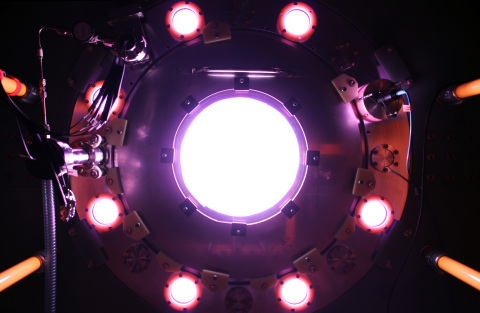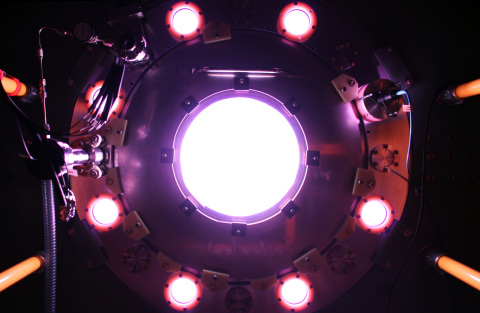REDMOND, Wash.--(BUSINESS WIRE)--Helion Energy (Helion), a clean electricity company committed to creating a new era of clean energy through fusion, today became the first private company to announce exceeding 100 million degrees Celsius in their 6th fusion generator prototype, Trenta. Reaching this temperature is a critical engineering milestone as it is considered the ideal fuel temperature at which a commercial power plant would need to operate. Helion will be presenting these operational results at the 63rd Annual Meeting of the APS Division of Plasma Physics. See abstract below.
Helion also announced their Trenta prototype recently completed a 16-month testing campaign, which pushed fusion fuel performance to unprecedented levels and performed lifetime and reliability testing on key components of the fusion system. Helion will be presenting these results at the 2021 IEEE Pulsed Power Conference & Symposium on Fusion Engineering. See abstract below.
Reaching these temperatures and confirming system reliability are vital milestones that validate Helion’s plans to develop a cost-effective, zero-carbon electrical power plant using its unique pulsed, non-ignition-fusion device.
“These achievements represent breakthroughs with major implications for how the world meets its expanding future electricity needs while dramatically reducing climate impact on a relevant timescale,” said Dr. David Kirtley, Founder and CEO of Helion Energy.
About Helion
By applying proven and patented technologies, Helion is working towards building the world’s first commercially-viable fusion power plant which runs on a fuel that can be derived from water. Their zero-carbon solution is capable of low-cost 24/7 power generation that replaces the energy sources the world currently relies on, enabling a future with limitless, reliable and affordable clean electricity.
Thermonuclear Field Reversed Configuration plasmas in the Trenta prototype
Kirtley, D., Hine, A., Milroy, R., Pihl, C., Ryan, R., Shimazu, A. Votroubek, G.
Helion Energy’s Trenta prototype merged and compressed high-Beta Field Reversed Configuration (FRC) deuterium plasmas to fusion conditions, reaching 9 keV total bulk plasma temperatures with operation above 8 keV ion temperature and 1 keV electron temperature. Extensive calibrated chords of x-ray spectroscopy, 1055 nm interferometry, Bremsstrahlung optical emission detectors, and a wide array of magnetic separatrix and neutron diagnostics confirm extended and repeatable FRC operation at thermonuclear fusion conditions. Fusion reaction rates and particle confinement meet or exceed traditional modified-Lower Hybrid Drift (LHD) FRC energy confinement and overall configuration time is limited as expected by the onset of n=2 rotational instability. This presentation will describe newly-discovered high performance operating modes and expand traditional energy and particle confinement scaling to the thermonuclear temperature regimes. Further, a summary of diagnostics and operational results of the Trenta prototype operation through 2020 will be detailed.
Vacuum vessel and divertor design and results of 16 month operation of the Trenta Magneto-Inertial Fusion prototype
Kirtley, D., Campbell, B., Hine, A., Milroy, R., Pihl, C., Ryan, R., Votroubek, G.
Helion Energy’s Trenta prototype recently completed a 16 month testing campaign, remaining under vacuum continuously with all fusion and diagnostic operations and system upgrades completed remotely. During this period, extensive MJ-class discharges were completed, including merging and compression of high-Beta Field Reversed Configuration (FRC) deuterium plasmas to thermonuclear fusion conditions with associated fusion product fluences. This presentation will detail vacuum vessel design and construction, operation and plasma-materials interface considerations for inductive, magnetically isolated, but high temperature (9 keV) and high fluence (1 MW/m^2) divertor plasmas. Furthermore, inductive systems require dielectric materials, traditionally SiO2 or Al2O3, that introduce unique interface challenges. Lastly, this presentation will phenomenologically discuss the operational results of the Mark-I scientific divertor with a focus on long-term operation.




